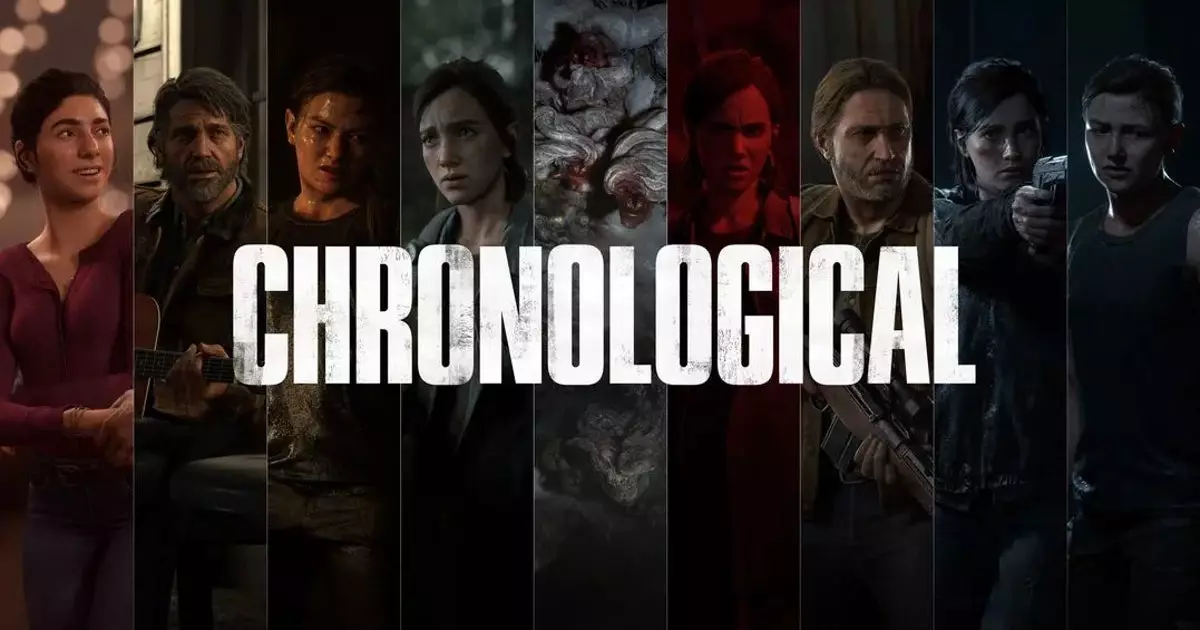In recent years, narrative design within contemporary video games has evolved into a complex tapestry of time, memory, and perspective. Naughty Dog’s decision to introduce a chronological mode in The Last of Us Part II Remastered is emblematic of a larger debate: does eschewing traditional non-linear storytelling enhance or dilute the emotional depth of a narrative? The core appeal of the original game rested on its intricate layered storytelling that weaved flashbacks and present-day sequences seamlessly, creating a sense of mystery and intimacy. By offering an alternative, linear experience, Naughty Dog challenges players to confront their assumptions about storytelling itself, risking a loss of the narrative’s profound ambiguity that fuels its emotional resonance.
This move invites us to reexamine the value of non-linearity in storytelling. Complex narratives with non-chronological timelines are not just stylistic choices but serve to mimic human memory and perception—chaotic, layered, and sometimes contradictory. By reverting to a straightforward, chronological order, the game sidesteps the intricacies that make its original storytelling compelling. It raises an important question: Is the essence of the story diminished when its puzzle-like structure is stripped away? The answer, undoubtedly, depends on the viewer’s expectations. For some, it could be an enlightening perspective—seeing the story unfold in a way that makes the causes and effects more transparent. For others, it could feel like the heart of the game is being sacrificed at the altar of simplicity.
Impact on Player Engagement and Narrative Depth
One might think that chronological storytelling would make the narrative more accessible, but the risk lies in reducing emotional complexity. The original nonlinear storytelling allowed players to experience Ellie’s growth and trauma_layers through flashbacks and present-day conflicts, each adding ambiguity and depth. Removing that layered texture — as the new mode proposes — risks flattening the emotional rollercoaster into a straightforward timeline. Witnessing Ellie’s journey in order might seem more “logical,” yet it could also diminish the narrative’s power to evoke empathy through unpredictability.
Furthermore, Naughty Dog’s portrayal suggests they believe players will gain “deeper insight,” but this view might underestimate the nuance contributed by their sophisticated narrative structure. When story beats are presented linearly, the mystery of characters’ motivations and the emotional stakes are less potent. The game’s power lies partly in the revelations that occur out of sequence, mirroring how memories and realizations come unexpectedly in real life. Ignoring that may result in a sanitized, less compelling experience, akin to watching a film where all plot twists are revealed upfront.
A Question of Artistic Intent and Audience Expectations
It’s crucial to remember that Naughty Dog’s storytelling style was a deliberate choice; their intent was to immerse players into the fragmented, emotionally turbulent psyche of their characters. By providing a “fascinating new way,” they may inadvertently undermine that vision. For fans accustomed to the original narrative’s layered delivery, the chronological mode might feel like a step backward—yet for others, it might be a welcome opportunity to understand the story more plainly.
However, their decision to market the mode as a “fascinating” alternative suggests an underlying assumption that the original storytelling was too complicated or obscure. This stance risks alienating core fans who appreciated the complexity, while also raising questions about their artistic intent. Are they diminishing their own creative achievement to cater to a simplified narrative form? Or are they genuinely exploring new ways to experience a story? The latter seems less convincing when considering the game’s reputation for tightly woven storytelling, which many argue is part of its genius.
The Culture of Innovation Versus Fidelity to Vision
This narrative experiment fuels a broader conversation about creative autonomy in gaming. Developers are often pushed to continuously innovate, but they must also respect the integrity of their core work. Naughty Dog’s foray into a linear timeline could be viewed as a blip—a moment of misjudged curiosity or superficial novelty—rather than a meaningful evolution of storytelling. It calls into question whether such features serve the story or merely tantalize players with novelty.
In the context of their other provocative addition—cosplaying Joel and Tommy as the Uncharted brothers—there’s a pattern: Naughty Dog seems to be embracing playful experimentation, but sometimes at the expense of coherence. While some fans may outstretch their patience for these stylistic diversions, others might see it as a distraction from more meaningful, ambitious projects. Development choices like these should stem from a desire to deepen narrative engagement, not from a need to showcase technical gimmicks or generate buzz.
In essence, this new mode provokes a vital debate: should games follow their own artistic principles or cater to a desire for more straightforward, comprehensible stories? Naughty Dog’s gamble highlights the tension between innovation and fidelity—an ongoing struggle at the heart of creative storytelling in interactive media. Whether this experiment will be remembered as a brilliant new perspective or a misguided detour remains to be seen, but it undeniably underscores the importance of respecting the narrative complexity that makes such games truly exceptional.

